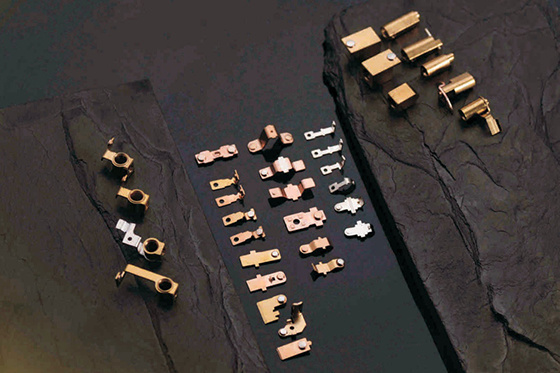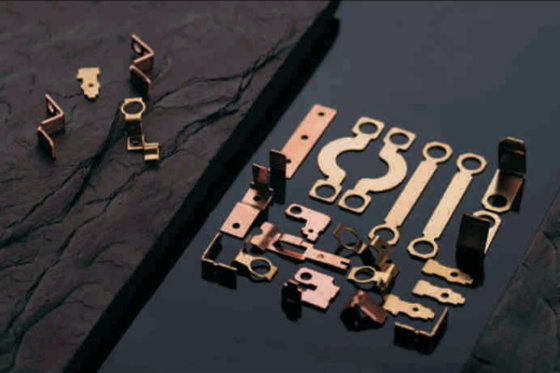Classification and application of electrical contacts and contacts-silver contacts
Time:
2023-11-30
Classification of electrical contacts
According to their contact mode, electrical contacts can be divided into the following three types
1) Fixed connection contacts. Refers to an electrical contact that cannot move relatively between the contact and the connected conductor. Such as bus connectors, electrical equipment lead connections.
2) Sliding contact. A contact mode in which the guide bodies can be kept in contact with each other but one contact surface is allowed to move relatively along the other contact surface is called sliding contact.
For example, the expansion joint of the bus bar and the brush of the motor are in sliding contact.
3) Break contacts. If the contact can be closed or opened during normal operation, it is called a breakable contact. The contacts of the various switches are disconnectable contacts.
(2) Break contacts are classified according to their structure:
1) Butt contact.
Butt contact refers to a planar butt joint between a moving contact and a fixed contact. This contact is more common in older multi-oil switches. It is characterized by simple structure and fast crushing speed.
The disadvantages are: the contact surface is unstable and changes greatly with the change of pressure; there is no self-cleaning effect during the opening and closing process; when the moving contact and the static contact are in contact, it is easy to rebound. Without the auxiliary contact, the main contact is easy to burn out.
2) Socket contacts.
Socket contacts are widely used in various low-oil circuit breakers, and their structure is shown in the figure below. It has dynamic and static contacts. The moving contact is rod-shaped, and the static contact is composed of multiple contact fingers, each of which passes current; the contact pressure is maintained by the spring 2. The advantages of the socket contact are: it has a self-cleaning function during the switching process; in the closed state, the contact rod of the moving contact is in contact with the inner side of the contact finger of the static contact, and when it is opened and closed, the arc appears on the moving contact The contact and the end of the static contact, so the contact resistance can remain stable in the closed state. When the socket contact passes a short-circuit current, the current flows in the same direction between the fingers and between the fingers and the moving contact rod, so the electromotive force is the attraction force, which increases the pressure between the moving contact and the static contact, And ensure good contact. Therefore, the electrical stability of the socket contact is high. Since the contact pressure direction and the moving direction of the moving contact are perpendicular to each other, the contact is very small when it is closed; the end of the contact finger can also be welded with a high melting point and alloy, so that the metal vapor is reduced when the short-circuit current is cut off.
The main disadvantages of the socket contact are: complex structure and difficult manufacturing. When the rated current increases, the closing force of the mechanism will increase (because the pressure of the finger on the moving contact needs to be increased to increase the closing resistance); the opening of the socket contact Time is also longer.





